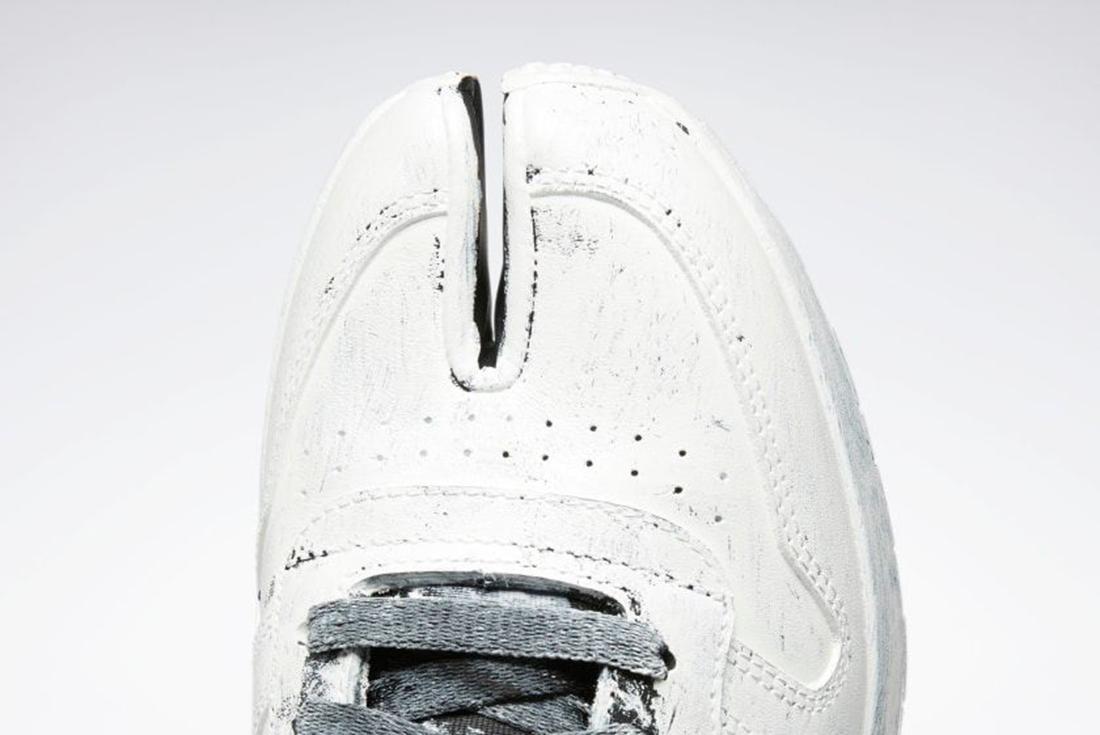Material Matters: A Brief History of the Tabi
The Tabi has become a fashion icon and social media status symbol, with an array of brands adopting the design over the past four-decades. Most notably, designer Martin Margiela is credited as the individual that brought the Tabi to the mainstream. Since being debuted via groundbreaking 1988 runway show, it’s become the brand’s signature. In the sneakersphere, the lays claim to the design, bringing the hoof to the barefoot running scene in 1996.
Nowadays, the Tabi is a prevalent force in fashion, especially on social media. Despite that, they’re still jarring, and you’re sure to catch some weird stares if you rock a pair on the street!
The History
The first Tabi design can be traced as far back as 15th century Japan, when they began importing cotton from China. The original hoof design was an ankle-high cotton sock to accommodate the primary footwear of that period – the Geta sandal, which looked somewhat like a flip-flop. To keep up with the country's strict hierarchical society, different colours were manufactured, representing different ranks and events. Samurai were allowed to wear any hue they desired, aside from purple and gold, which were reserved for the upper echelon of society. Commoners wore indigo, multi-coloured or patterned Tabis were created exclusively for performers, and special events such as weddings and tea ceremonies called for white.
The dawn of the 20th century saw the rise of rubber en masse, and led to evolutions in Japanese footwear. The Jika Tabi, a durable split-toe boot, was born. Basically, the Jika Tabi used a more durable material than its cotton counterpart, also fitted with a rubber sole unit. Tokujirō Ishibashi and Shōjirō Ishibashi, who both have a long history in the rubber business, the latter founding Bridgestone tires, were credited with the invention. The Jika Tabi was a popular choice for those involved in manual labour jobs, like construction, rickshaw driving and agricultural work. The design was believed to make wearers more nimble and increase agility. Hence them being worn by Japanese soldiers during World War II, exposing many westerners to the footwear. Although, their unique sole design made them easy to track on the battlefield!
The Onitsuka Effect
As a Japanese legacy brand, you bet dabbled in the Tabi! Back in 1951 ,a runner by the name of Shigeki Tanaka actually won the Boston Marathon wearing a pair of hoofed Onitsuka sneakers. Following the win, Onitsuka and other running brands attempted to cash-in, crafting tabi-inspired sneakers, although they didn’t take off. In 2006 Onitsuka was in the headlines again with another Tabi. This time it was in collaboration with the Japanese space agency JAXA, to create a specialised shoe, for astronaut Takao Doi to wear on his journey to the international space station.

Margiela Took it Mainstream
Debuted on the runway in 1988, designer Martin Margiela is credited as the one who gave the Tabi mainstream attention, especially among the high-fashion audience. Since its initial unveiling, the style has become synonymous with the Maison Margiela brand, and now comes in an array of styles – from tall leather boots to ballet flats! When Margiela joined collaborative roster, they crafted a swathe of Tabi designs, including an and .
Tabis Spotted in Beaverton
In 1996 Nike introduced their Air Rift, which was crafted as a barefoot-style runner, however it wasn’t inspired by the Japanese Tabi! The name references the Great Rift Valley which runs through Kenya, and the sneaker is inspired by those who train there. The OG colourway, consisting of black, green and red is also a subtle nod to the Kenyan flag. Despite building a cult following during the years after it was released, the Air Rift never took off as a mainstream running shoe. Fast forward to 2020 and Nike had another attempt at Tabi footwear with their technical ! Standing for Improvise, Scavenge, Protect and Adapt, it aimed to address the needs of city dwellers through environmentally-friendly and forward-thinking design. The ISPA Drifter and Rad Warrior both boasted technical builds – as if from 20 years in the future – and Tabi toes!
Do you want to read more about the Tabi? Appreciate the wonderfully weird Nike Air Rift !
